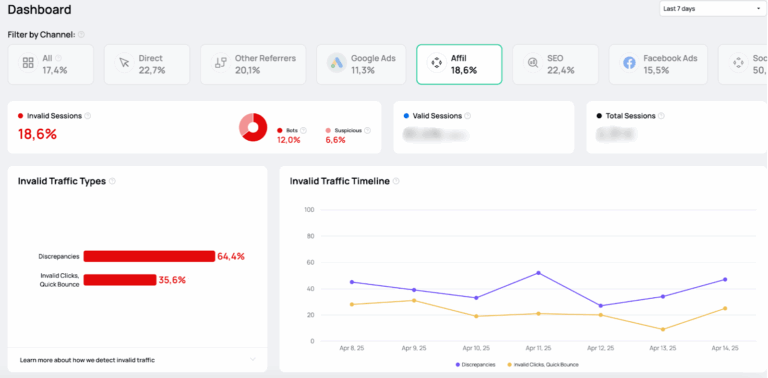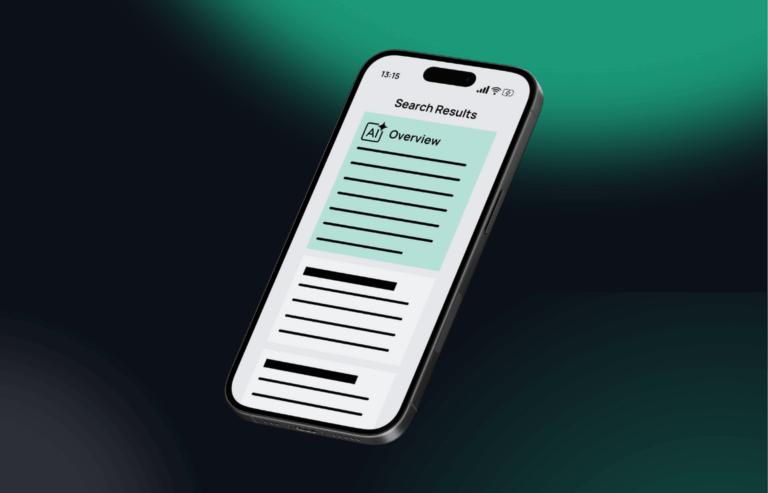- Blog
Understanding and Combating Affiliate Fraud & IVT: What Every Marketer Needs to Know

Cybersecurity Content Specialist

Affiliate marketing is supposed to be one of the most efficient, performance-driven channels in a marketer’s toolkit, only paying for results, not promises. But what happens when those results are faked or simply invalid?
As we covered in our blog post on affiliate fraud, deceptive tactics can silently drain your budget, skew your analytics, and reward partners who deliver no real value. But fraud isn’t the only threat hiding in affiliate data. Another equally damaging issue is often overlooked: invalid traffic (IVT).
IVT isn’t always the result of intentional manipulation. In many cases, it’s caused by careless traffic sourcing, bots, or shady sub-affiliate networks your partners may not even be aware of. But the effect is the same: wasted spend, distorted performance metrics, and commissions paid on traffic that never had a chance to convert.
For some marketers, the problem shows up as unusual click patterns, inflated visits with zero engagement, or suspicious bounce behavior. For others, certain affiliates always outperform without a clear reason, often rewarded simply for showing up last in the customer journey.
Regardless of whether it’s fraud or IVT, the outcome is the same: budgets drained, dashboards misled, and affiliate programs that reward noise instead of value.
Real-World Case: How One Company Discovered Hidden Affiliate Fraud
One of our customers found that even with modern tracking systems, fraud can still creep in, hidden beneath the surface.
In just seven days, the affiliate channel showed a troubling anomaly: 18.6% of all sessions were flagged as invalid.
At a glance, the numbers didn’t look alarming. But when we drilled deeper into the data, we found:
- 64% of the invalid sessions came from known bot networks, mimicking human behavior to inflate performance.
- 36% of the invalid sessions displayed suspicious patterns, like excessive click frequency from the same IP, mismatched device data, and extremely short bounce times.
The invalid traffic fell into two primary categories:
- Discrepancies (64.4%), things like unrealistic time-on-site metrics, conflicting geo-data, and unnatural referral paths.
- Quick bounces and invalid clicks (35.6%), often a sign of click bots or users incentivized to click but not engage.

This Isn’t Always Fraud But It Is a Problem
Not all invalid affiliate traffic is the result of deliberate fraud. Some affiliates may run low-quality campaigns, buy unvetted traffic, or rely on shady sub-networks they don’t fully control.
But regardless of intent, invalid traffic means wasted spend. You’re paying commissions on sessions that have zero chance of converting, while your analytics and performance metrics get distorted in the process.
What Marketers Can Do and How Our Tool Helps
This is exactly where our tool makes a difference. Here’s what marketers can do based on the affiliate IVT insights shown in the dashboard above:
- Identify underperforming or suspicious affiliates
Use the IVT data to drill down by channel, then by affiliate ID or sub-network. Focus on partners showing above-average invalid session rates. - Open the conversation
Share this data with your affiliates. In many cases, they may not even be aware of the quality issues. Give them a chance to clean up their traffic sources or switch partners if needed. - Stop paying for traffic that doesn’t convert
Once you know where invalid traffic is coming from, you can pause payouts, reduce commissions, or eliminate underperforming affiliates entirely. That’s a budget you can reinvest in higher-performing, verified sources. - Reallocate spend with confidence
With affiliate IVT visibility, you can confidently shift budget to top performers or alternative channels like programmatic and Paid Search channels that show stronger engagement and higher valid session rates.
Bottom Line
Every affiliate issue, whether it’s affiliate fraud or IVT coming from affiliate channels, costs you and wastes your ad budget. The key is visibility, and the ability to act on what the data shows. With the right tool in place, you can protect your budget, maintain partner accountability, and build a cleaner, higher-performing affiliate program.

See what’s hidden: from the quality of website traffic to the reality of ad placements. Insights drawn from billions of data points across our customer base in 2024.
- Published: September 2, 2025
- Updated: September 4, 2025
1%, 4%, 36%?




